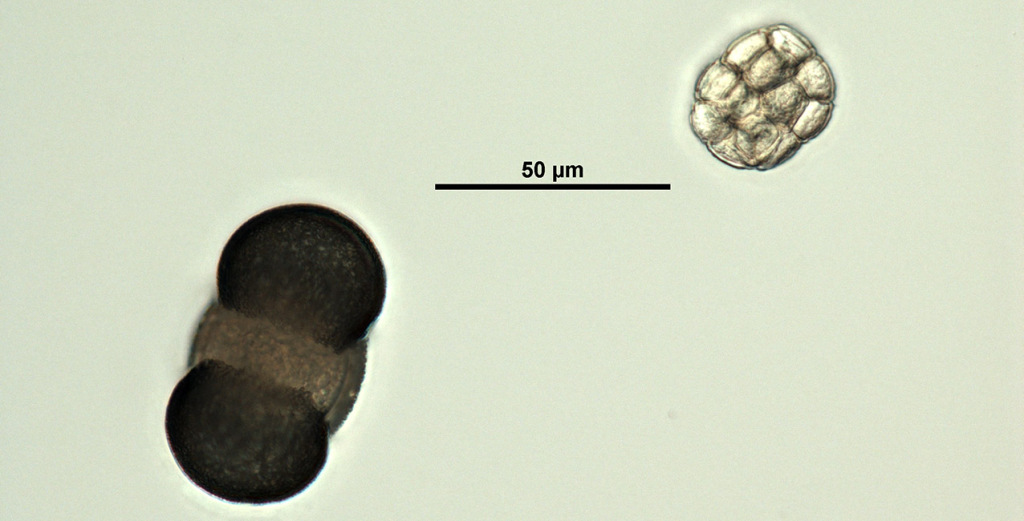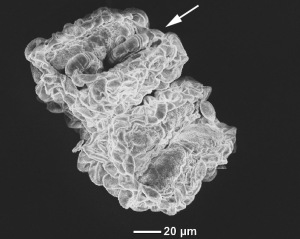 A fine pale yellow dust has recently been seen coating cars and floating on puddles: pollen. This has led to enquiries being made to State Herbarium staff and discussions on local media. Samples were collected by staff member Carolyn Ricci and analysed under high magnification with a compound microscope and an electron microscope.
A fine pale yellow dust has recently been seen coating cars and floating on puddles: pollen. This has led to enquiries being made to State Herbarium staff and discussions on local media. Samples were collected by staff member Carolyn Ricci and analysed under high magnification with a compound microscope and an electron microscope.
Wattle day is September 1st, and the national floral emblem, Acacia pycnantha has been flowering strongly for some time. The favourable season this year has also resulted in many Acacia species flowering together when they are more typically staggered. These prominent blossoms occur around the time that some people start to experience hay fever, but other less obvious plants are having a great season as well: pines are producing large amounts of pollen from their strobili and oaks are producing pollen from their catkins. These wind pollenated species must produce huge amounts of pollen to achieve successful fertilisation by chance, so the pollen’s ability to float in the wind over long distances is advantageous. Acacia pollen is transported by insects, so the pollen tends to be heavy and sticky. Wattle blossoms are made up of hundreds of tiny flowers that effectively become pollen brushes to its visitors. Acacia pollen is also distinct in that it forms polyads, balls of pollen commonly in multiples of four. In comparison pine pollen comes as single grains with two air sacks to help it float in the wind.

Light microscope image of pine (left: with two air sacs) and wattle pollen (right: polyad consisting of 16 pollen grains).
The images here show what was found, large amounts of pine pollen with its distinctive twin air sacks. A polyad of Acacia pycnantha is included for comparison, this was collected from a blossom from the Adelaide Hills and the polyad physically removed for examination. Acacia pollen was not found amongst the pine pollen but should be present in lower amounts.
Grass pollen is well known for its strong allergic reactions. This wind pollinated group is likely to become more prevalent in the next few weeks! Enjoy spring.
A radio interview with State Herbarium staff member Martin O’Leary on pollen was conducted on ABC South East SA on Thu., 4 Sep. 2014. It is available online on the ABC web-site.


